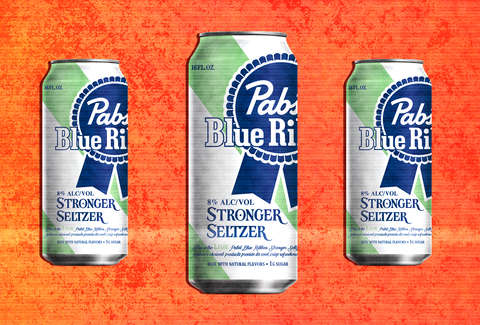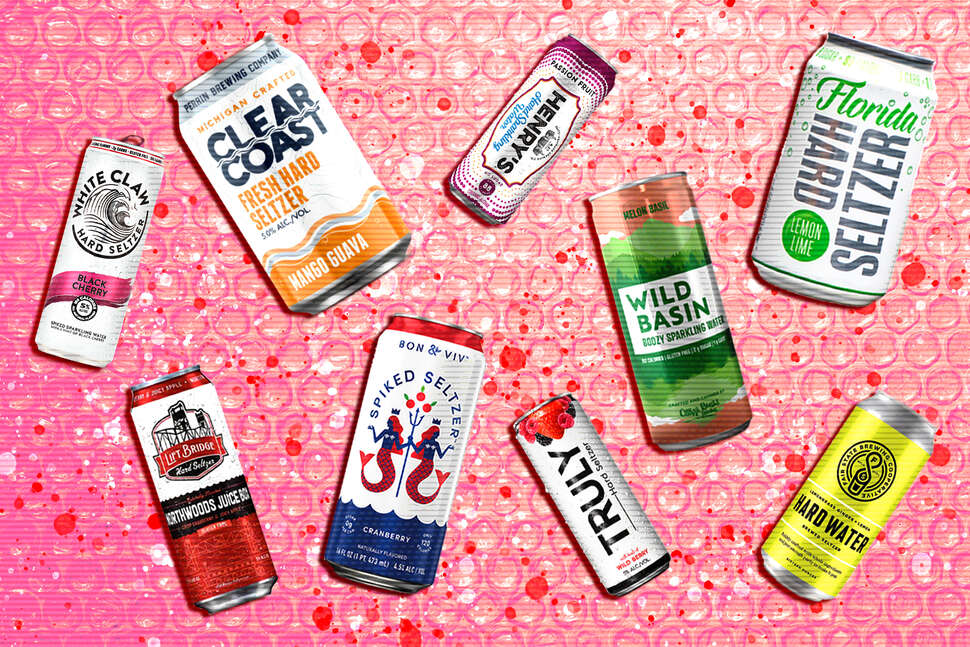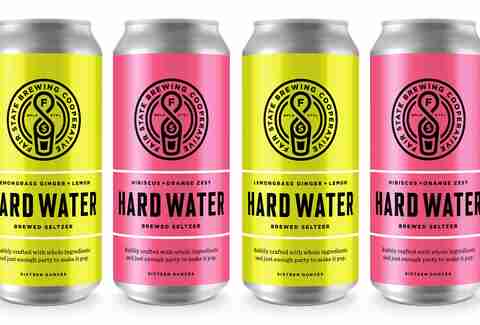
The seltzer game just got dangerous
An Intense PBR Hard Seltzer Is Coming for Your Late-Summer Parties
By DUSTIN NELSON Published On 08/12/2019
@dlukenelson

Courtesy of Pabst Blue Ribbon - Edited
Just a few weeks removed from the release of its surprisingly good Hard Coffee, Pabst Blue Ribbon has formally announced it is introducing yet another new product that isn't intended to be the cheapest light beer in the bar. Blue Ribbon fans have seen a whole lot of expansion of the brand this year with PBR Extra, a non-alcoholic PBR, Hard Coffee, and the forthcoming PBR Whiskey. Now, your favorite blue ribbon will adorn cans of hard seltzer.
Though, it wouldn't be a very PBR move to simply make a seltzer that people craved. The company is putting a twist on it with Stronger Seltzer. It's hard seltzer, but, well, stronger. It's pretty self-explanatory, which isn't exciting, but you should be glad it's not called an Imperial Seltzer. Stronger Seltzer comes with an 8% ABV, which is significantly higher than the typical 4.5%-5.5% you'll find on most hard seltzers. (Though, Natural Light is releasing a hard seltzer with a 6% ABV.)
The hard seltzer market is reaching the point where brands have to start differentiating themselves to find new drinkers and chisel away at White Claw's dominance. Nauti has created Extra Nauti, a stronger seltzer that's akin to this PBR release. Sercy Spiked & Sparkling is an organic alternative. Fick's is made with real fruit. With the market getting saturated in brands competing for your burgeoning seltzer loyalty, this is a trend that could pick up steam. (In addition to brands like Natural Light leaning into affordability.)
PBR isn't specifically catering to the crowd hard seltzer frequently caters to: the health-conscious drinker looking for a low-calorie, sugar-free drink. Stronger Setlzer claims to be low in calories, but it has 228 calories. That's less than many strong malt beverages, but more than double the 100-ish calories many hard seltzers tout.
"Stronger Seltzer explores new ground for the Blue Ribbon while upholding the boundary-pushing tradition that’s been associated with us since the days of our founder Jacob Best," said John Newhouse, brand manager at Pabst Blue Ribbon. "Stronger Seltzer is a fun and innovative new drink that delivers big on taste, and gives our customers something different to enjoy."
Similar to the brand's Hard Coffee rollout, Stronger Seltzer will only be available in select markets beginning August 12. The test markets include Arizona, California, Montana, and Texas. It'll be perfect for those hot afternoons when you want a drink and to also fall asleep at 5pm.
Four Loko teases new seltzer with nearly triple the alcohol content of its competitors
Four Loko teases new seltzer with nearly triple the alcohol content of its competitors
August 14, 2019 / 5:39 PM
Four Loko, an alcoholic beverage line once popular with millennials, appears to be jumping on the hard seltzer trend in an extreme way. In a series of tweets, Four Loko teased a seltzer boasting a much higher alcohol-by-volume amount than its main competitors.
The brand tweeted a photo of a can labeled Four Loko Sour Seltzer "with a hint of blue razz" and a 14% ABV. "Hard Seltzers ran so we could fly," Four Loko's Twitter account wrote Tuesday, showing rival brands in soft-focus in the background.
Four Loko joins a crowded list of alcoholic beverage lines entering the hard seltzer market, which now includes beer makers Pabst Blue Ribbon, Corona, Natural Light and others. But Four Loko's drink — which brags of being "The Hardest Seltzer In The Universe" — has nearly triple the alcohol content of popular product lines such as Bon & Viv Spiked Seltzer (4.5% ABV), White Claw Hard Seltzer (5% ABV) and Truly Hard Seltzer (5% ABV).
It is unclear when the product will be available in stores. CBS News reached out multiple times to Phusion Projects, the company that owns Four Loko, for more information, but did not receive a response back.
Four Loko, once a caffeine-spiked alcoholic drink, was banned in several states and reformulated under pressure from the FDA in 2010. It no longer contains caffeine.
A year later, the company was told to change its labels and the Federal Trade Commission charged it with deceptive advertising. The company had claimed the drink had an alcohol equivalent of two beers, when in fact it contains as much alcohol as four to five beers.











